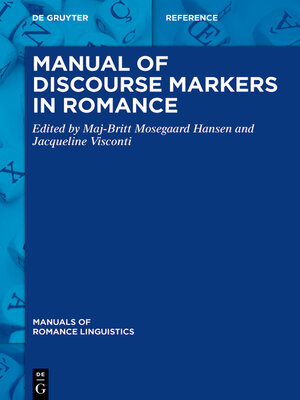Manual of Discourse Markers in Romance
ebook ∣ Manuals of Romance Linguistics
By Maj-Britt Mosegaard Hansen

Sign up to save your library
With an OverDrive account, you can save your favorite libraries for at-a-glance information about availability. Find out more about OverDrive accounts.
Find this title in Libby, the library reading app by OverDrive.



Search for a digital library with this title
Title found at these libraries:
| Library Name | Distance |
|---|---|
| Loading... |
Virtually unstudied until the 1980s, discourse markers have gone on to become a growth industry. Research on markers is central to comprehensive theories of the synchronic linguistic system as such, of the use of language in communication, and of language change. From the very beginning, linguists working on Romance languages have been at the forefront of research on discourse markers. Including among its contributors many of the foremost experts in the field, this volume not only offers substantial state-of-the-art introductions to the diverse facets of contemporary research on discourse markers, with a focus on Romance, but it achieves added value by including in each chapter original and previously unpublished results.
The first part of the book addresses foundational issues: What are discourse markers? What is their relationship to other types of pragmatic markers? The second part considers discourse markers at different levels of linguistic description, in particular: their grammatical status, their semantics and pragmatics, their prosodic features, their positioning within discourse units. The third part outlines different approaches to the study of discourse markers, namely contrastive studies, corpus linguistics, discourse traditions, and historical linguistics. The fourth part explores discourse markers at the interface with central topics in linguistics, such as politeness, social variation, language acquisition and psycholinguistic processing. The final part focuses on discourse markers in each of the major Romance languages, namely French, Italian, Spanish, Catalan, Portuguese and Romanian.
The volume will be of interest to researchers and students working in the field of Romance studies, general linguists, pragmaticians, discourse analysts, educationalists, and psychologists.







